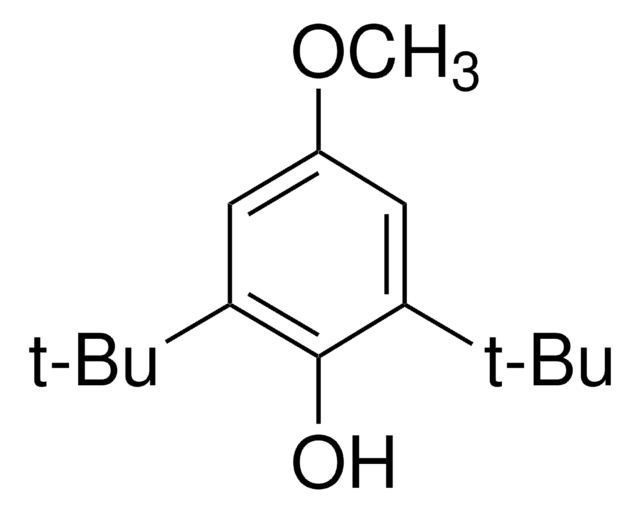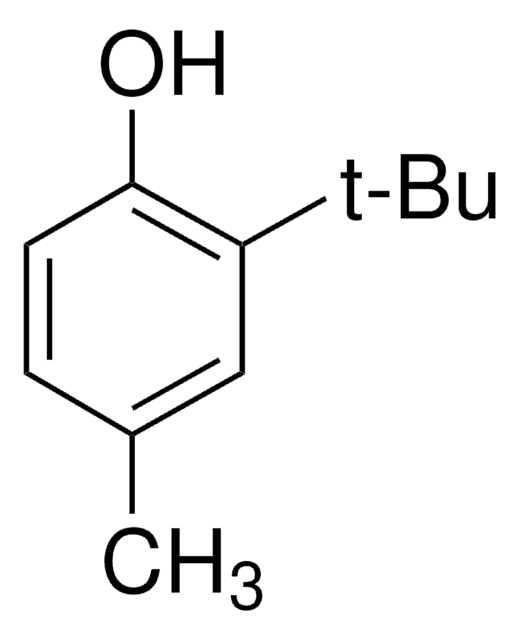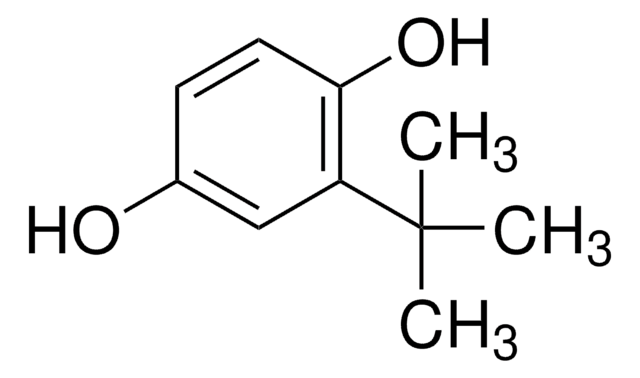34750
2,6-Di-tert-butyl-4-methylphenol
purum, ≥99.0% (GC)
Sinónimos:
2,6-Di-tert-butyl-p-cresol, BHT, Butylated hydroxytoluene, Butylhydroxytoluene, DBPC
About This Item
densidad de vapor
7.6 (vs air)
Nivel de calidad
presión de vapor
<0.01 mmHg ( 20 °C)
grado
purum
Análisis
≥99.0% (GC)
temp. de autoignición
878 °F
bp
265 °C (lit.)
mp
68-72 °C
69-73 °C (lit.)
solubilidad
methanol: 0.1 g/mL, clear, colorless
methanol: soluble 100 mg/mL, clear, colorless
cadena SMILES
Cc1cc(c(O)c(c1)C(C)(C)C)C(C)(C)C
InChI
1S/C15H24O/c1-10-8-11(14(2,3)4)13(16)12(9-10)15(5,6)7/h8-9,16H,1-7H3
Clave InChI
NLZUEZXRPGMBCV-UHFFFAOYSA-N
Información sobre el gen
human ... CAPN1(823)
rat ... Capn1(29153) , Nos1(24598)
¿Está buscando productos similares? Visita Guía de comparación de productos
Categorías relacionadas
Descripción general
Aplicación
Palabra de señalización
Warning
Frases de peligro
Consejos de prudencia
Clasificaciones de peligro
Aquatic Acute 1 - Aquatic Chronic 1
Código de clase de almacenamiento
11 - Combustible Solids
Clase de riesgo para el agua (WGK)
WGK 2
Punto de inflamabilidad (°F)
260.6 °F - open cup
Punto de inflamabilidad (°C)
127 °C - open cup
Equipo de protección personal
dust mask type N95 (US), Eyeshields, Gloves
Choose from one of the most recent versions:
¿Ya tiene este producto?
Encuentre la documentación para los productos que ha comprado recientemente en la Biblioteca de documentos.
Los clientes también vieron
Nuestro equipo de científicos tiene experiencia en todas las áreas de investigación: Ciencias de la vida, Ciencia de los materiales, Síntesis química, Cromatografía, Analítica y muchas otras.
Póngase en contacto con el Servicio técnico





